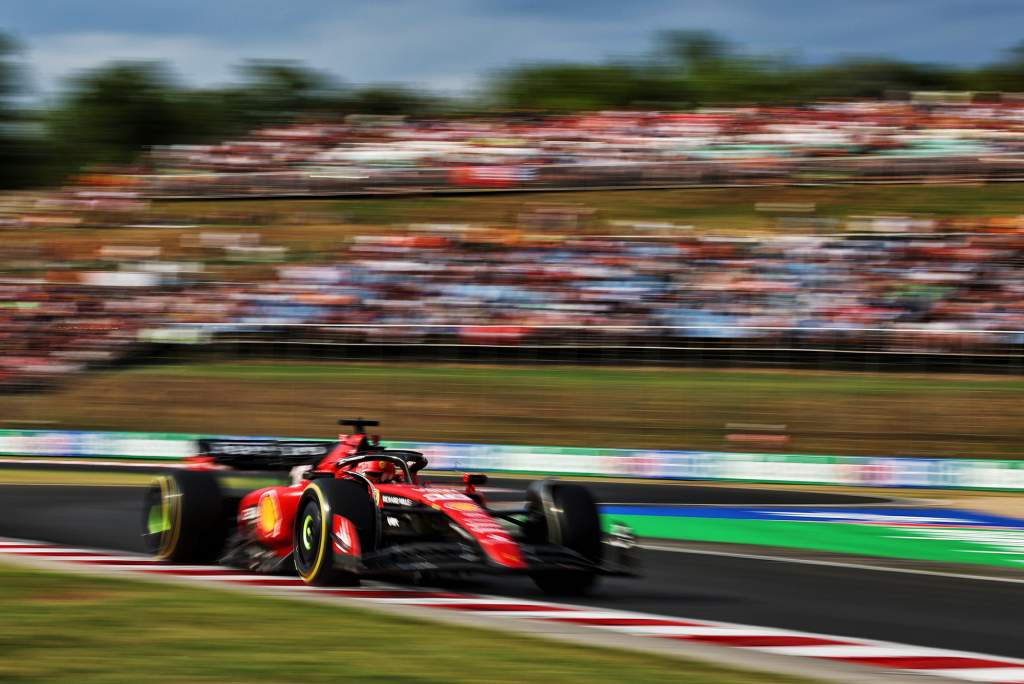Up Next

Forget the headline times from Friday practice for Formula 1’s Hungarian Grand Prix.
We always say that on an F1 Friday, but this time really, really forget them: they bear almost no relationship to the underlying competitive order.
If you were to come up with a recipe for how to mix up a Friday practice day, you’d pick a rarely-used track where there is always a massive ramp-up of grip, you’d rain out the first session, denying anyone any slick-tyre running and wiping the track completely green ensuring the ramp-up was even bigger.
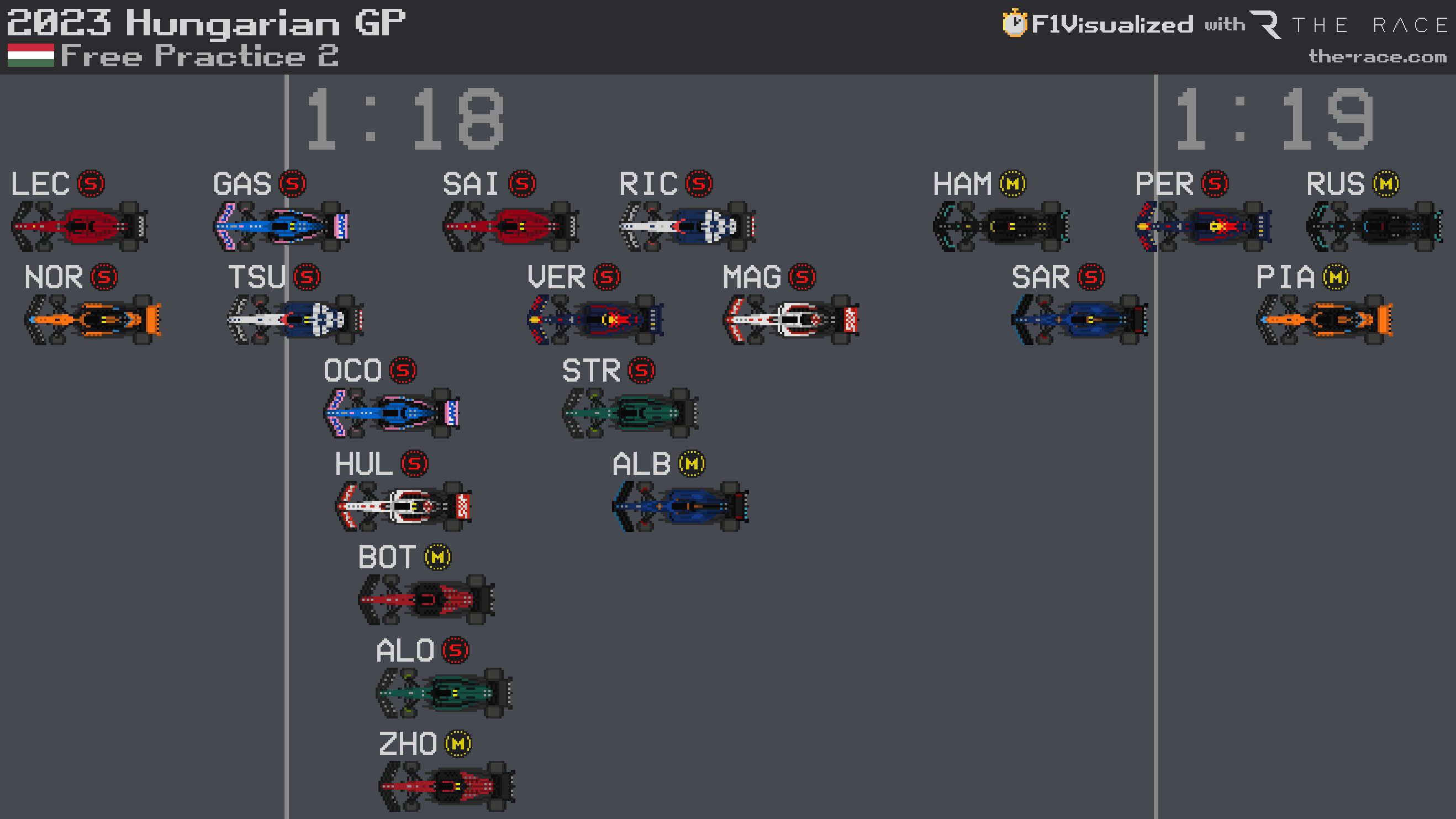
This would make the timing of your run way more important than the speed of your car. A track almost two seconds quicker by the end than the beginning is a bigger gap than from the fastest car to the slowest.
Into that mix you’d then have a big spread of tyre performance between the compounds, a new tyre allocation which led some – but not all – to save their softs (much rarer under this allocation) and do all their running on the mediums.
Then you’d have a big mix of fuel loads as everyone was trying to squeeze two sessions-worth of info-gathering into one.
That should do it – and it did. Everyone adapted to the new set of challenges in their own way, depending upon their priorities.
Long-run averages
1 Verstappen (Red Bull) 1m23.2s (softs)
2 Bottas (Alfa Romeo) 1m23.4s (mediums)
3 Norris (McLaren) 1m23.5s (mediums
4 Zhou (Alfa Romeo) 1m23.5 (mediums)
5 Leclerc (Ferrari) 1m23.6s (softs)
6 Gasly (Alpine) 1m23.7s (mediums)
7 Alonso (Aston Martin) 1m23.7s (mediums)
8 Russell (Mercedes) 1m23.8s (mediums)
9 Stroll (Aston Martin) 1m23.8s (mediums)
10 Ocon (Alpine) 1m23.8s (mediums)
11 Sainz (Ferrari) 1m23.9s (softs)
12 Tsunoda (AlphaTauri) 1m24.0s (mediums)
13 Hamilton (Mercedes) 1m24.1s (mediums)
There was a little bit of commonality between McLaren, Alpine and Aston Martin in that they all did medium-tyred long-runs at about the same time. This suggested McLaren had a small edge within that group, with Alpine and Aston Martin closely matched.
It’s where the rest of the field fits in around that small island of commonality which is impossible to judge with any certainty.
But we can make some broad-brush bigger points with some degree of confidence. Such as:
Is Red Bull slow?
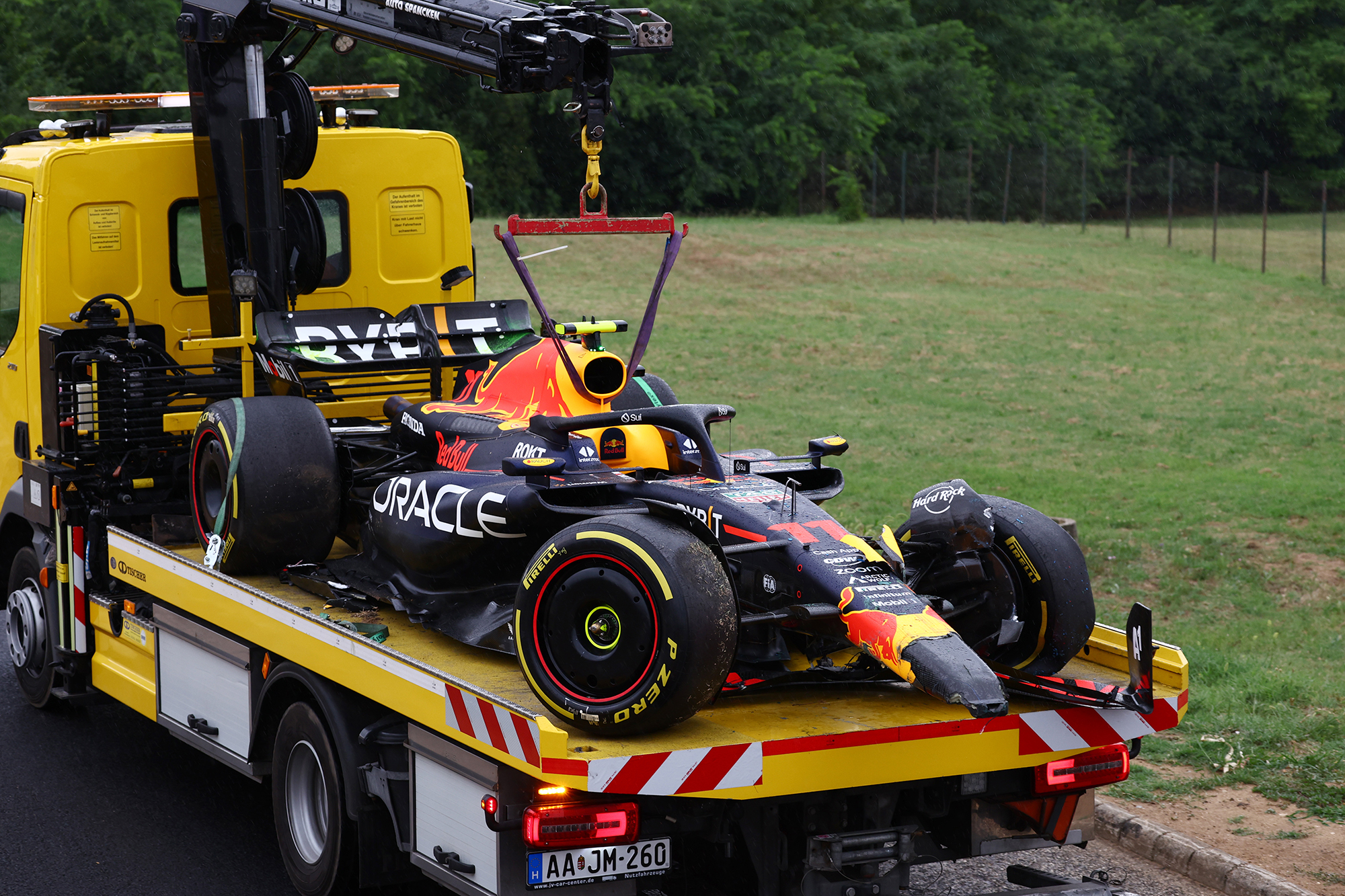
Of course not. It’s likely still the fastest car in the place despite Sergio Perez’s best attempts at disguising that by his instant car-damaging off in FP1 and his wasting the only set of soft tyres set aside in FP2 for his single lap with a big flat-spotting lock-up.
Red Bull did no serious low-fuel running at all with its updated car, as Max Verstappen took on the brunt of info-gathering. His 10th-fastest time was around 0.5s slower than Yuki Tsunoda’s AlphaTauri was lapping at the time, both on fresh soft tyres. This was from a six-lap run, only a couple of which were push-laps as he attempted to manage the cooling and then warm-up of the soft C5 tyre, not something it was responding well to.
The tyre was too cool at the beginning of the lap, giving him understeer through the first few turns around a track at which that trait loses you masses of laptime because of the long corners.
He was driving very much with the big picture in mind, with the confidence in the car’s underlying pace to try to figure out the puzzle rather than setting the track alight.
“It is very hard to comment on the new upgrades after a limited amount of running,” Verstappen said.
“We will look through the data to see if everything is correlating well because we haven’t actually used a lot of tyre sets today.
“With this new format you are super limited with the tyres you can use and I didn’t want to use them today, so we could have a better preparation tomorrow.

“We want to be the quickest in qualifying but first we need to do a bit more running with different tyre sets to get a better understanding.
“The car felt not too bad, there was a bit of understeer but when I went out on the long run we looked competitive. It’s difficult to say over one-lap pace but overall the car is still strong.”
That long run pace he refers to is using Ferrari as a reference, as they were the only two of the usual frontrunners to conduct their long runs on the softs. Verstappen lapped an average of around 0.35s faster than Charles Leclerc, 0.6s faster than Carlos Sainz. That tells you the Red Bull is around where you’d expect it to be – at the front and with a margin.
So where are the rest really?
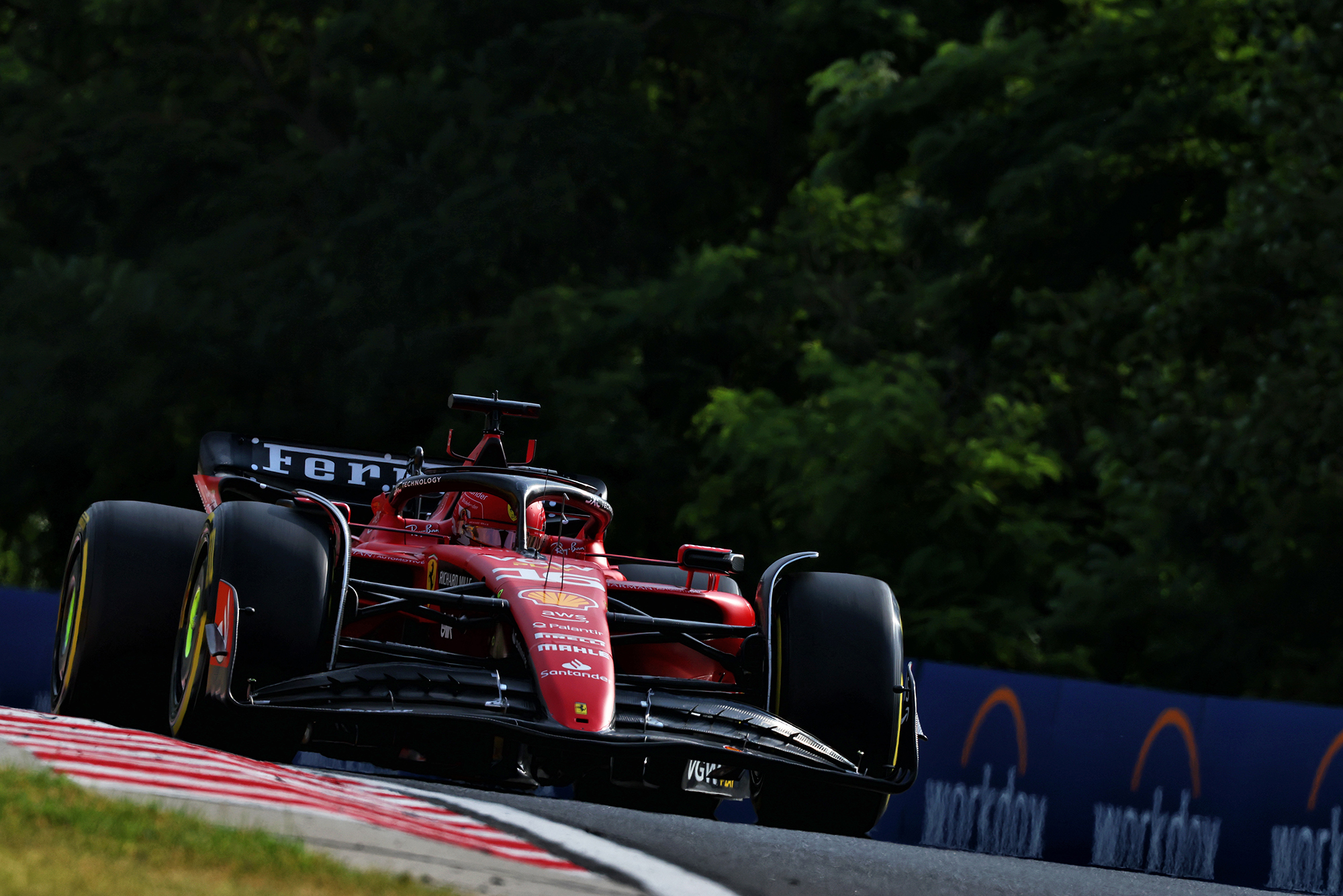
Leclerc set the fastest single lap of the session with one focused single lap, as if in qualifying, rather than Verstappen’s multi-lap ‘low’ fuel run.
But with the long runs suggesting the Ferrari is about as far off the Red Bull as usual, it was the small gap to McLaren and Alpine behind – both of which were out at around the same time as the Ferrari and also replicating a qualifying run plan – which was interesting.
Lando Norris and Pierre Gasly each set their times a few minutes before Leclerc, theoretically when the track was slower. Yet Norris was within a couple of hundredths of the Ferrari (just as in Silverstone qualifying) and Gasly only around 0.1s behind.
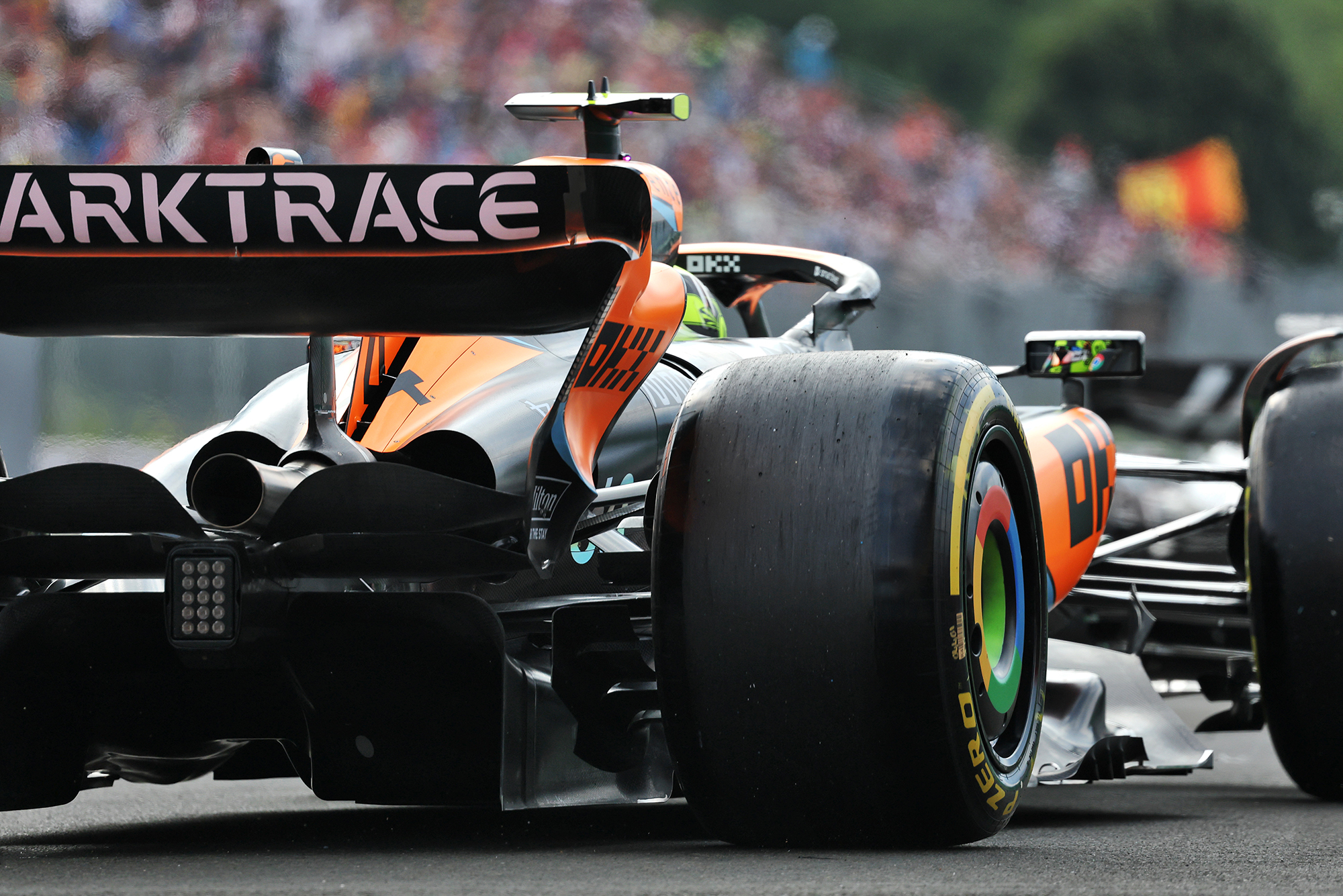
Norris was untypically upbeat afterwards. He came here expecting the McLaren to struggle because of the slow corners. He found that although it still wasn’t great in Turns 1 and 12, some of the corners were fast enough for the MCL60 to get into its stride.
“It was tricky to get enough learning in,” he said, “but I think we understood the car reasonably well. We’ve got a good balance, a couple of things to work on but in the faster corners our car gives us that confidence and gives us some laptime.”
Alpine was expecting to do well here, given its strong speed in Monaco and how it seems at its best in slow corners.
Although Aston Martin didn’t shine in the single-lap comparison, Fernando Alonso’s medium-tyred long run was better than Esteban Ocon’s. Gasly in the other Alpine set a very good long-run average.
What about Daniel Ricciardo?
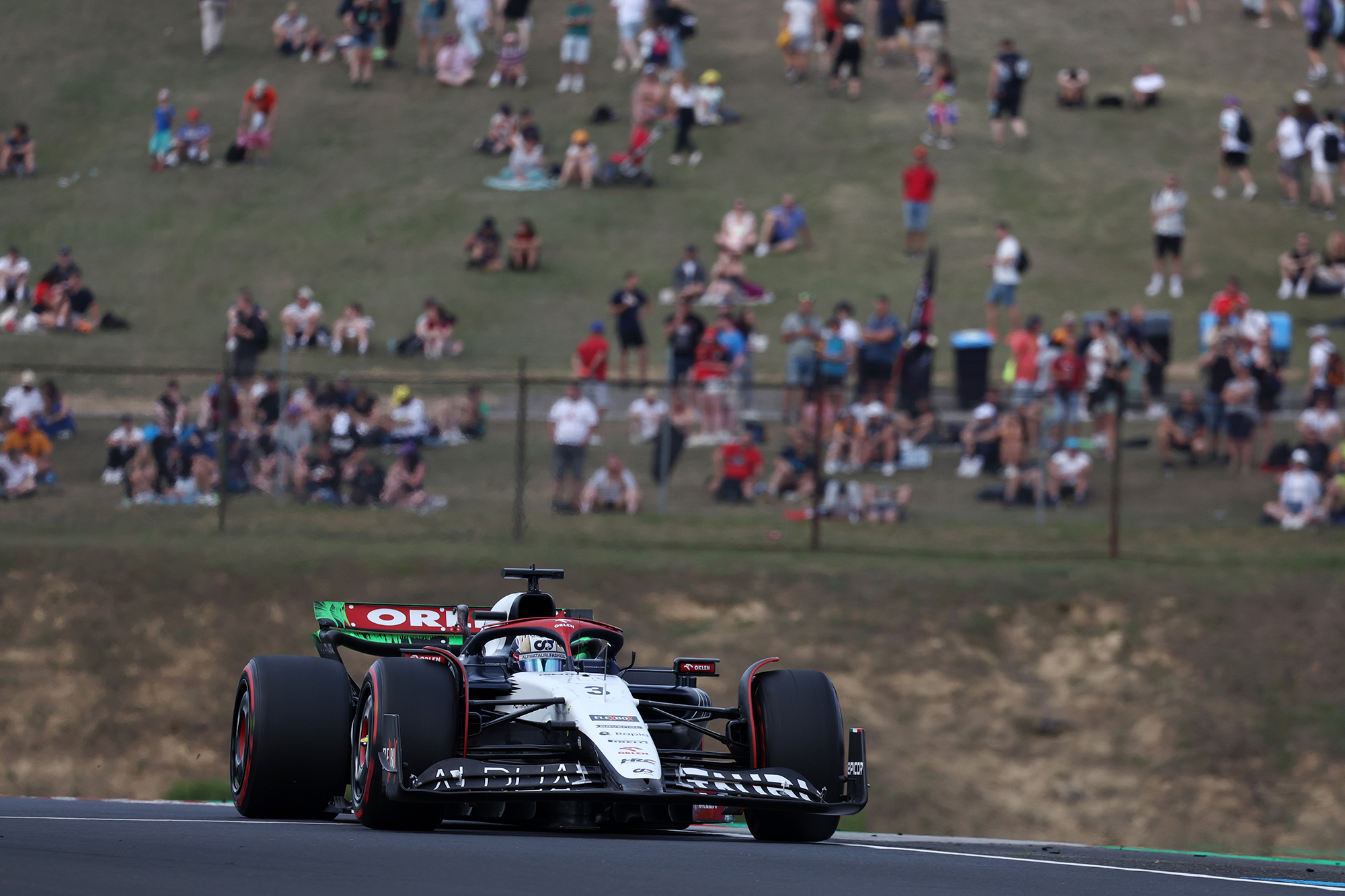
The further upgraded AlphaTauri looks far better than it did at Silverstone, now with a front end to match its upgraded rear. Tsunoda was out at the same time as Norris, Gasly and Ocon and split the Alpines.
Ricciardo was 0.4s slower – and that can be interpreted in many ways. Disappointing, or not bad for a comeback in an unfamiliar car after a few months out of the cockpit?
Daniel’s a glass half-full kind of guy and here was his take: “I’m just feeling where I am with the car. It all felt pretty familiar, like I’d never really left.
“This afternoon, there was a bit [lacking] on the new tyre to find but nothing I’m too concerned about. The car felt OK. There’s a bit to come out of me and some things to work on in the car. It’s OK.”
Is Mercedes really a disaster here?
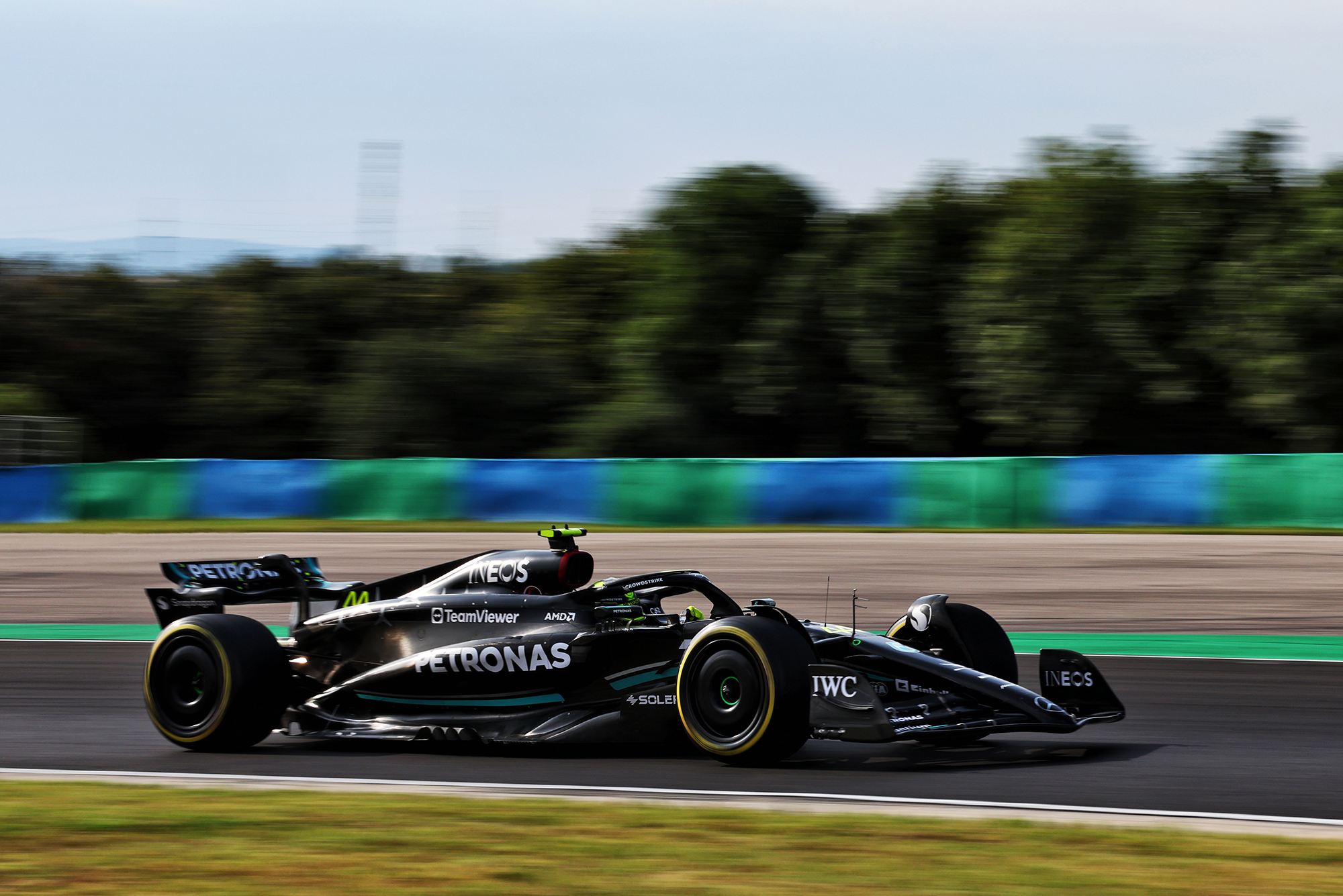
No. Lewis Hamilton and George Russell did their low-fuel runs on the medium tyre they’d briefly used in FP1 before the Perez red flag and the rain. They then ran the same set for their long runs. Even compared to the other medium long-runners, those hard qualifying-style laps will have eaten into a lot of the tyre’s performance.
The medium tyre looks to be well over a second slower than the soft over a single lap, so Hamilton’s 16th-fastest 1m18.7s probably translates to something close to Ferrari/McLaren pace.
But there was another who used only mediums but went faster than Hamilton: Valtteri Bottas. The Alfa Romeo actually looks untypically good here and might, even more than AlphaTauri, be this week’s dark horse Q3 contender. Its long-run times look too good to be true, so we should probably assume a fuel load offset there. But it’s way better than usual.


